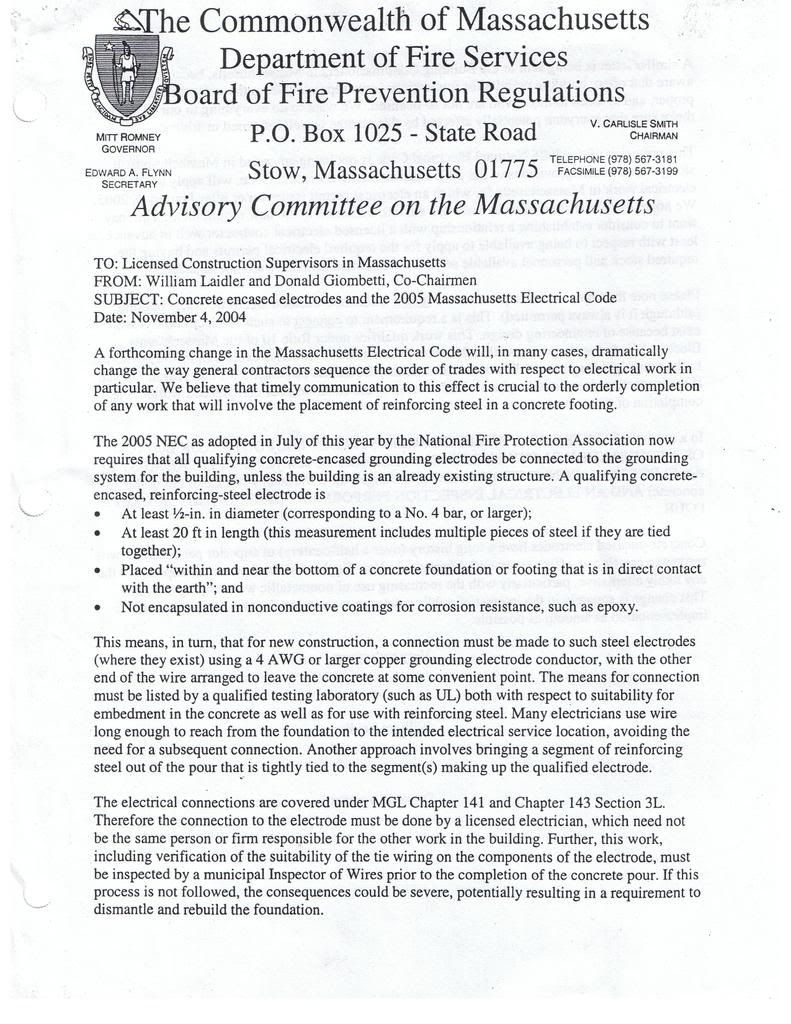- Location
- Massachusetts
Dennis Alwon said:Come on bob you not that is not the same as 20 being tied together in a footing. Of course you can't do that but the stub out is an extension of the 20 feet not an add on.
I have laid out what I know from the NEC.
Your right that I don't really believe I can tie steel together outside the footing. Just like I don't believe I can use the steel stubbed outside the concrete as a GEC.

